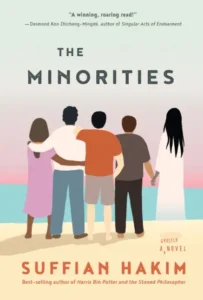
Editor(s): Loh Kah Seng, Thum Ping Tjin & Jack Meng‑Tat Chia
Genre: Non-fiction / Singapore Studies / Political & Cultural History
Ideal For: Readers who believe the stories we tell about ourselves matter—especially when they’re national ones; those seeking to question the “official” narrative; and anyone curious about how myths shape identity, policy and belonging in Singapore.
A Nation of Myths — And the People Who Dare to Ask “Why?”
From the very first pages of Living with Myths in Singapore, the editors set the tone: Singapore is not just a nation, it’s a story. But what happens when the story begins to feel more like a myth? This essay collection refuses to accept the “Common Sense Singapore” narrative of “Third World to First,” “meritocratic miracle,” or “deficient people saved by wise leaders.” Instead, across 24 chapters by leading scholars, the book invites us to interrogate how these myths were built, who they serve, and what they hide.
Whether you grew up immersed in the mantra of “Singapore Story” or arrived recently, this volume is powerful. It doesn’t offer a replacement myth; it offers something more valuable — the skill of asking questions.
The Structure & Style: Sharp, Varied, Accessible
Organised into four thoughtful sections (“The Singapore Story,” “Third World to First,” “Vulnerability & Faultlines,” and “A Deficient People”), the book moves from origin myths of the nation to contemporary contested narratives. Written by a mix of historians, sociologists and public intellectuals, the chapters vary in style — some deeply archival, others reflective essays — but remain clear and compelling.
The editors’ intention was to bring academic insight to a broader public:
“The chapters in this volume … had in mind a general audience and readership.”
The result: you’re invited in, not talked down to. The tone is engaged, often critical, but never gratuitously polemic; the book trusts your intelligence.
Themes That Resonate
Myth not as falsehood, but as shaping force. The contributors define myths not as lies, but as sweeping narratives that become accepted “common sense.”
Dominant story vs. alternative narratives. The idea that Singapore has a singular, unified history is challenged. Who gets left out of that history? What transparency do we owe each other?
Faultlines beneath the façade. The book probes Malaysia-style “First World” bragging, yet persistent inequalities, migrant-worker invisibility, class stratification and conditional citizenship persist. One chapter reveals how poverty in Singapore isn’t absence of wealth—but hidden.
Citizenship as contested. When the state labels the people “deficient,” or the nation always “vulnerable,” what does that do to individual and collective agency?
What Works Beautifully
Ambitious scope. The breadth of topics — education, welfare, immigration, media, labour, governance — means the book doesn’t feel narrow. It becomes a panoramic view of Singapore’s myths and realities.
Accessible scholarship. Complex arguments are made without jargon. It has surprising readability.
Courageous questions. Perhaps the greatest achievement is that it opens a space for Singaporeans to ask “What else could have been possible?” rather than simply “What else can we build?”
Relevance beyond Singapore. Although specifically about Singapore, the lessons on myth-making, identity, governance and narrative apply globally. Invitation to reflection. The book doesn’t claim to “solve” Singapore’s issues. It invites you to think, unlearn, and wonder. That’s rare in a non-fiction volume about national identity.
A Minor Caveat (But Very Minor)
If you are seeking a flawless historical narrative with all evidence laid out in linear form, you might find the pace uneven. Some chapters delve deeply into archival minutiae, others adopt more essayistic tone. This variation is a strength if you welcome diversity of voice; but it may feel slightly disjointed if you prefer uniform structure.
Also, because the book is suggestive rather than prescriptive, you might conclude thinking: “Okay, now what?”
But perhaps that’s exactly the point.
Why You’ll Carry This Book With You
After finishing Living with Myths in Singapore, you’ll likely view public statements, national celebrations, civic campaigns and “success” narratives with new curiosity. You might glance at a news story about “Singapore’s achievement” and say: Yes, but whose version of the story is that?
You’ll remember lines like “the myth of Singapore as a model” or “the narrative of a deficient people saved by meritocracy” (paraphrased). You’ll reflect on how your own identity might fit — or not — inside those scripts.
You’ll perhaps recommend it with: “Read this if you’ve ever wondered which Singapore story you’re living through.” It’s the kind of book you keep on your shelf not just for reference, but for opening conversation whenever you feel the need to ask “Why did we believe that?”
Living with Myths in Singapore earns its full five stars because it does precisely what every good overview of a society’s story should — it challenges, it expands, and it doesn’t give easy answers. Loh Kah Seng, Thum Ping Tjin and Jack Meng-Tat Chia have edited a volume that both honours complexity and demands reflection. If you want a book that respects your thinking, invites critique, and opens new lenses on a familiar city-state, this is absolutely it.


